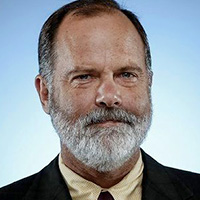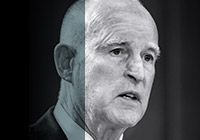IT WAS A SURPRISE.
Few people have done more to combat air pollution than Mary Nichols, but here she was, at breakfast in a coffee shop on Larchmont Boulevard, saying that California has more pressing problems than climate change.
Nichols, 71, quick to smile but quietly forceful, is a fierce fighter for the environment. A professor in residence at the UCLA School of Law, she is chair of the California Air Resources Board — for the second time. Forty-five years ago, fresh out of Yale Law School, she filed the first lawsuit under the Clean Air Act. Since then, she has reduced diesel emissions, taken steps to repair the ozone layer, decreased acid rain, curtailed particulates in the atmosphere and, most recently, overseen sweeping changes to cut greenhouse gases and slow global warming. She drives an electric car.
So it came as a bit of a shock to hear her say: “Fixing the budget may be more important for the moment.” She paused over a soft-boiled egg. “Housing, education — these are serious problems. There’s a need to address them.”
But then Mary Nichols pointed out an important difference. Education, housing, the state budget are, one would hope, short-term troubles. On the other hand, climate change, although it can seem remote and incremental, is “an existential issue for the world.”
California, she said, should never relinquish its leadership in charting the course against it, because climate change has implications for mankind.
The long fight for clean air
Last spring, Nichols delivered a commencement speech at Harvey Mudd College in Claremont. President Maria Klawe introduced her by passing along gratitude from an alumnus, who recalled that in his days as a student he could rarely see Mount Baldy, and who thanked Nichols for getting rid of the smog that hid it.
Rarely flustered, Nichols seemed taken aback to be given credit for the view, but she accepted the compliment and shared it. Credit, she told the graduating class, belonged not just to her but also to “a few thousand other people.” Because of a combined effort, she said, “We can see Mount Baldy on most days from this campus. The Air Resources Board, back in the 1970s, had to fight to get to that point. We thought we knew what could be done. …But the lobbyists and the lawyers…told us it couldn’t be done.”
Tenacity is one of Mary Nichols’ defining characteristics, particularly on behalf of important causes. As a student in Ithaca, N.Y., during the 1960s, she demonstrated for peace. With a group from Cornell, she went to Tennessee to register voters. During law school at Yale, she visited California and saw firsthand that the environment was in danger.
“We got to Los Angeles in the late afternoon,” she told the L.A. Times. “I remember descending into the basin, driving west toward Sunset Boulevard and being astonished by the peculiar color of the air. It was a kind of flaming orange – not a natural color but a peculiar Day-Glo, chemical kind of orange.” When she moved to L.A. in 1971 with her husband, she joined the Center for Law in the Public Interest to lead its battle against air pollution.
She sued California under the Clean Air Act to force the administration of then–Gov. Ronald Reagan to meet the EPA’s anti-pollution requirements. Nichols won, but she discovered the frustrations of using litigation to compel improvement. She encountered foot-dragging by both industry and government. Reagan was unwilling to force faster progress.
But Mary Nichols did not give up.
In 1974, she met with Jerry Brown, 36 at the time, who had picked his way through a crowded field and been elected to the office that Reagan had won from Brown’s father eight years earlier. Young Gov. Brown was a strong environmentalist (see the Q&A in this issue). He and Nichols hit it off. They shared — and still do — an unusual blend of philosophical curiosity and a pragmatic approach to politics. Brown offered her a spot on the Air Resources Board, and she accepted.
She focused squarely on smog. Under her leadership — and with support from Brown, who elevated her to chairman a few years later — the ARB demanded improvements in pollution control for automobiles, which the Clean Air Act allowed specifically for California. Car companies balked. General Motors and later Ford famously complained that if Nichols and her agency had their way and companies were required to install catalytic converters, it would bankrupt manufacturers. Nichols did not back down; both Ford and GM, it bears noting, are still in business.
Nichols dove ever more deeply into the complexities and politics of air quality. In 1993, President Clinton put her in charge of the Office of Air and Radiation at the Environmental Protection Agency in Washington.
The chief threat then was acid rain. Congressman Henry Waxman and others secured a set of amendments to the Clean Air Act in 1990 that allowed EPA to develop a cap-and-trade program. Nichols and her colleagues refined and implemented the program. She also confronted ozone depletion and a growing awareness of the dangers of particulates in the air.
Those were important achievements, but not the crowning moments of Nichols’ career, which has otherwise been rooted in California. “I had a great staff and a fearless boss, Carol Browner,” Nichols said of her time in Washington. “But I found the federal government mired in bureaucratic intrigue…And I missed California.”
She returned in 1997. Two years later, Gov. Gray Davis appointed her Secretary of Natural Resources. And under Gov. Arnold Schwarzenegger, she reclaimed her old post at the ARB, now renamed the California Air Resources Board. At first, Nichols regarded Schwarzenegger, a Re- publican, with some wariness, but they found common ground, and their collaboration serves as a reminder that air pollution and climate change are issues that should bridge partisan politics.
Announcing her appointment, Schwarzenegger —who signed AB 32, California’s landmark climate change legislation — said of Nichols: “There is no one more qualified, more committed and more able to lead our efforts on climate change and air quality than Mary Nichols.”
In 2013, Time magazine named her one of the 100 most influential people in the world.
The Opposition
Nichols is the rare political figure who has championed a difficult, complex and staggeringly significant cause without succumbing to bitterness or wallowing in the polarization that cripples so much good intention in Sacramento and Washington. She is relentlessly positive, but hardly naïve; she recognizes that there are forces arrayed against her.
There are two main lines of opposition to the efforts that she has advanced against climate change. The first is mounted by deniers, who refuse to accept scientific evidence that the world is growing warmer and that greenhouse gases are to blame. “I don’t relish being at the head of a wedge issue,” Nichols said about poll numbers suggesting that a significant segment of the American electorate, not to mention many of the Republican Party’s leading political figures, question the science. Still, she sees hope in data since the Paris Summit showing a shift toward acceptance. She and Brown attended the summit, where California’s leadership was acknowledged by many, including Mary Robinson, the UN Special Envoy on Climate Change.
The second source of opposition seems more rational, but Nichols finds it in some ways more vexing. It comes from those who acknowledge the fact of global warming but argue that the sacrifice needed to respond is too harmful to California’s economy. In other words, climate change is real, but California should do less to fight it because the effort risks the state’s economic health to do a favor for the world.
Former Gov. Pete Wilson is among those who sounds that alarm. During a recent panel discussion at Los Angeles Town Hall, Wilson said that California has gone too far in combating climate change because the state’s efforts, in addition to its other environmental regulations, make it less competitive with Nevada, Oregon and other neighbors in the drive to lure businesses and jobs.
That argument infuriates Nichols. “To say we’re losing ground to Oregon or Nevada is just not true,” she said, her voicing rising in irritation. Indeed, study after study has searched for evidence that California’s climate change program is harming its economy and found nothing to support that notion. To the contrary, two recent economic forecasts — one from the Los Angeles County Economic Development Corp. and one from UCLA’s Anderson School — predict that California will outpace the nation in job growth over the next five years, environmental regulations notwithstanding.
Using data from the Bureau of Labor Statistics, a study by Lee McPheters at Arizona State University found that in 2015, California ranked sixth among all states last year in employment growth, adding more than 16 million jobs, for a growth rate of 3%. Texas, on the other hand, which has pursued an opposite strategy on climate change from California — low regulation and little environmental protection — ranked 14th in job growth.
“People keep looking for the effect of AB 32 on our economy,” Nichols said, “but they can’t find it.”
Building a carbon-neutral economy
What has happened so far in the battle against air pollution and climate change pales in comparison to what comes next.
Testifying before a California Senate committee in 2014, Nichols spelled out greenhouse-gas reduction goals in transportation, water, building construction and retrofitting, agriculture and energy generation. Nothing less than a comprehensive, market-based revolution, she said, is required to reorient California and the rest of the world toward sustainability.
To some, that is too much to comprehend. They simply give up, convinced that humanity has waited too long to rise to this occasion, that politics are too daunting, that technology can’t catch up fast enough.
Not Nichols. She continues to demand that society examine its history and prepare for its future. Industrial- ization “worked very well for 100 years,” she said. “Now it’s not working so well.” The next 20 years — “an eyeblink in history,” as she describes it — will decide whether and how humanity meets this challenge.
“We’re all in this together,” Nichols said.
As for her role in this long and existential struggle, no one has described it better than Waxman. Awarding her an environmental prize in 2014, he captured the singularity of this determined woman, one who is feared and admired, calm and resolute; one whose life has been shaped by the conviction that all people are entitled to breathe clean air.
“Mary Nichols has pursued a cleaner and healthier environment with tremendous intellect, energy, vision, confidence, tenacity and compassion,” Waxman said. “And she has done it with passion and joy… She reminds us all that government can bring people healthier and better lives.”
The proof: Mount Baldy, once invisible from Claremont, now is there for all to see.

























